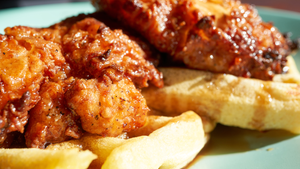Food prices are going up everywhere—but in some areas more than others
Large central metro areas are seeing higher food prices than non-core rural areas, according to data from Datasembly.
November 11, 2022

There are some major differences in food prices depending on where groceries are purchased, according to Datasembly’s latest Grocery Price Index, and inner cities are on the higher end of the costs.
Datasembly’s Grocery Price Index measures weekly changes in pricing for grocery products, and collects over two billion product prices daily. Data is collected from more than 130,000 stores and more than 180 retail banners, spanning over 30,000 zip codes across the United States, according to the company.
Americans are feeling the pressures of inflation everywhere. Consumer prices in October rose 0.4% for the month and 7.7% year over year, according to the Bureau of Labor Statistics.
But recently, Datasembly’s Grocery Price Index revealed significant differences in prices at the register in large central metro areas (inner cities) and non-core rural areas.
Research from September showed that meat and seafood prices climbed 1.5% and deli increased by 1.3% in urban centers versus rural areas. In the third quarter, beverages went up 1.4% more in inner city areas than in rural areas, and alcohol prices fell 2.1% more in rural areas than in inner city areas.
Cities and states across the U.S. are experiencing increases in certain grocery categories, though again not similarly. Atlanta saw the largest increases in breakfast cereal (5.6%), followed by Nashville (4.8%) and Memphis (4.7%). The largest increases for deli were in Portland, Oregon, at 5%, followed by Seattle (4.8%) and Denver (4.7%). Grand Rapids, Michigan, saw the largest quarterly increases for candy at 9.6%, followed by Columbus, Ohio (9.1%) and Atlanta (9%). Condiments/spices/sauces were at 10.4% in Seattle, the largest quarterly increase, followed by Portland, Oregon (9.2%), according to the data.
Nationally, the two categories that went up more than 2% were deli at 2.7% and breakfast cereal at 2.1%. The categories that decreased in price were meal solutions (grains and pasta) at -0.5% and snacks (cookies/chips) at -0.1%. The highest quarterly increases were candy at 7.6% and condiments/sauces/spices at 6.75%.
In August, e-commerce technology platform Swiftly released data that showed three categories that had increased more than 10% since January—adult beverages, pet food and salty snacks. At that time, other categories had also seen increases, such as candy, with a price increase of 7% since January, along with bath and body products (15%) and bread (9%).
About the Author
You May Also Like




